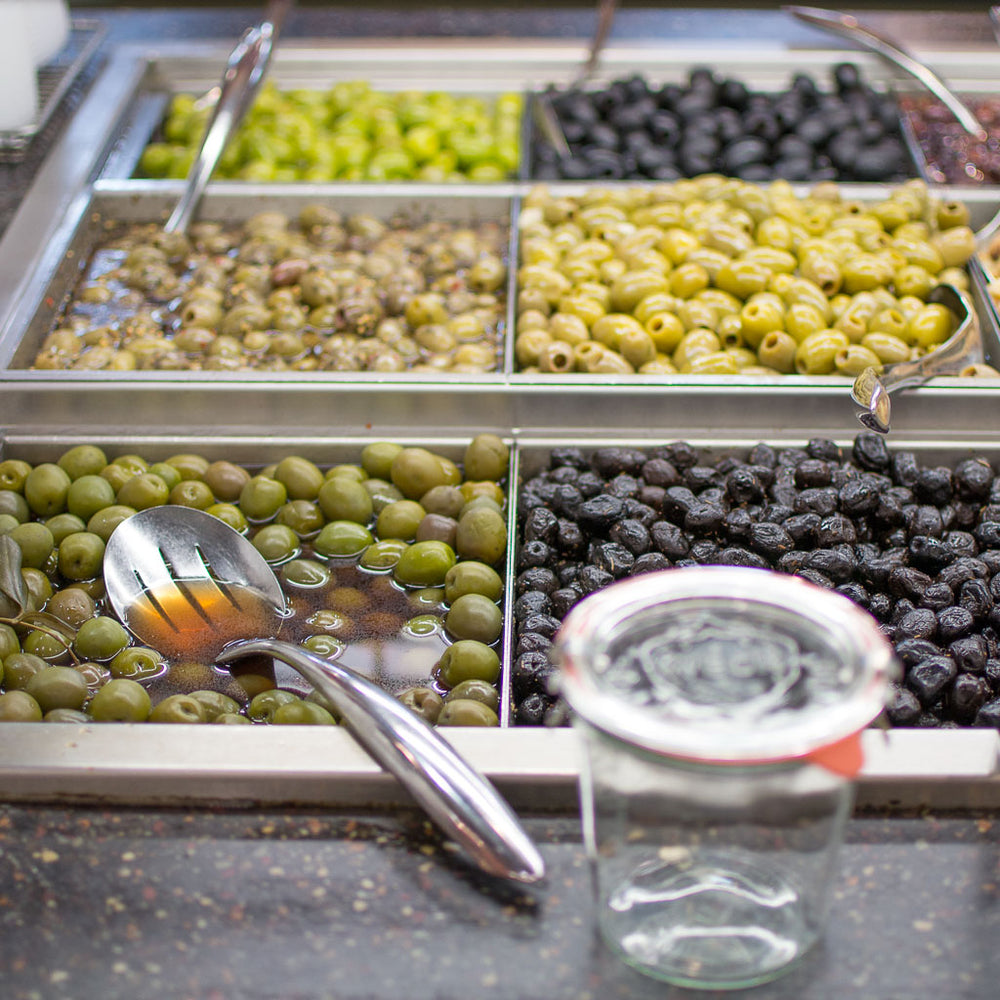Grocery shopping presents one of the biggest hurdles for living a zero waste lifestyle. There’s the plastic produce bags, the plastic packaged goods, the plastic containers for olives and nut butter, plastic wrapped cheeses, and even the bulk aisle is filled with plastic bags.
My foray into plastic-free shopping began with swapping plastic produce bags for reusable cotton produce bags to buy fruits and veg at Whole Foods Market. This simple switch drastically cut down the plastic I was taking home. It wasn’t until a year later that I started looking into other methods for cutting down my plastic consumption even more. I had learned about plastic-free lifestyles and noticed that many zero wasters used glass jars and other creative methods to shop.
Buying almond butter in my own glass jar felt intimidating at first. Would it be complicated? Would the cashiers turn me away? Luckily, the staff at our Whole Foods was super nice and weighed and labeled my jar for me before I filled it with creamy, delicious nut butter. After that, I was hooked. I felt more confident using my own containers and started approaching additional departments at Whole Foods to find out if they would accept my zero waste approach. Turns out, many stores are very receptive to plastic-free shopping!
Here are 11 creative ways you can shop plastic-free at Whole Foods Market:
1. Produce: Cloth produce bags are the gateway tool to plastic-free shopping. I appreciate that most of Whole Foods’ produce is unpackaged—they even have bulk lettuce, spinach and arugula bins and a variety of gourmet unpackaged mushrooms. I like to use a mesh produce bag for sturdier produce like apples, oranges and potatoes. These bags are also nice because the cashier can see through the mesh easily to scan the items. For more delicate items, like lettuce, I use a muslin produce bag. I give the bag a spritz of water once I’m home to keep the leaves crisp in the refrigerator.
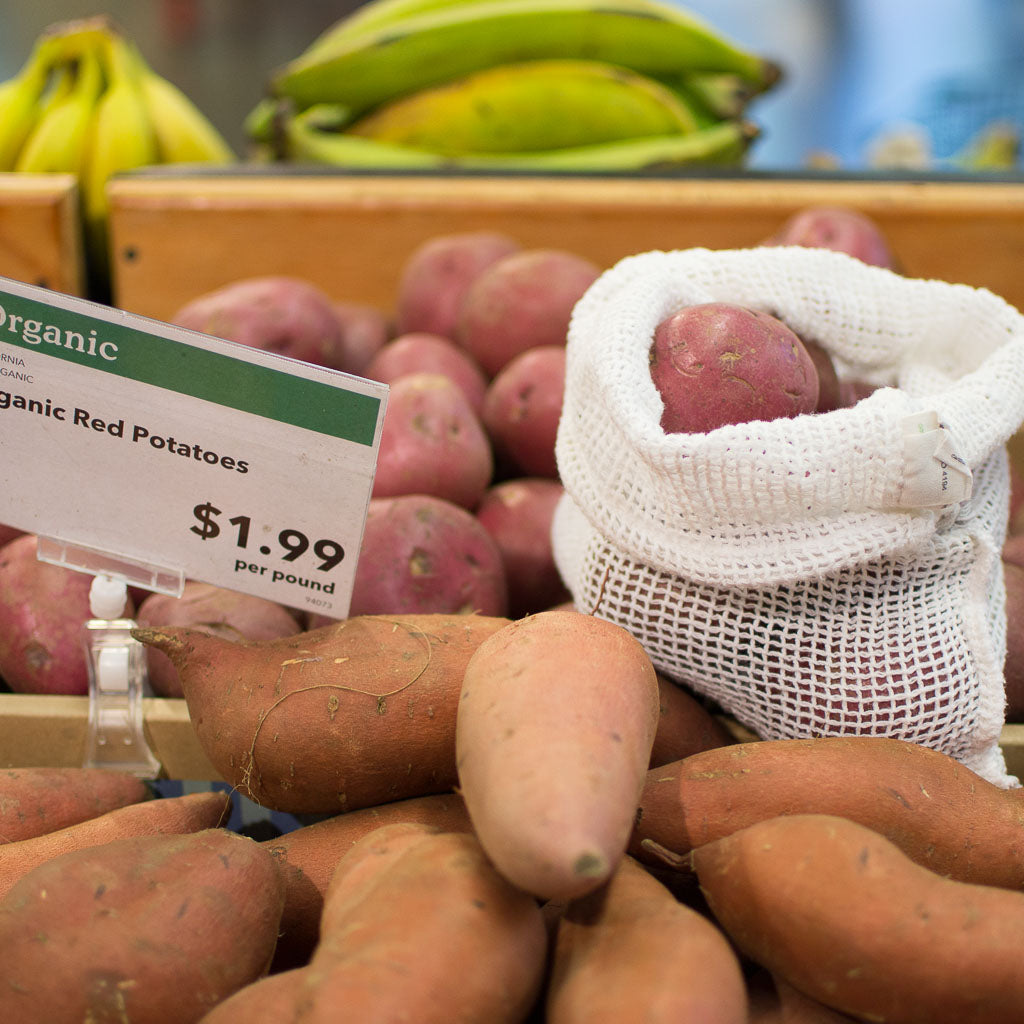
2. Nut Butter: Have you ever tried the fresh ground nut butters at Whole Foods? They’re crazy good. Before I learned to how to shop with a glass jar, I went through a plastic tub of almond butter a week. Now, I take my own extra large jar and fill it up. Before you fill, be sure to “tare” (aka weigh) and label your empty jar. The cashier will subtract the weight of your empty jar from the total weight of the jar filled with nut butter. To learn how to tare and shop with glass jars, read my post here.
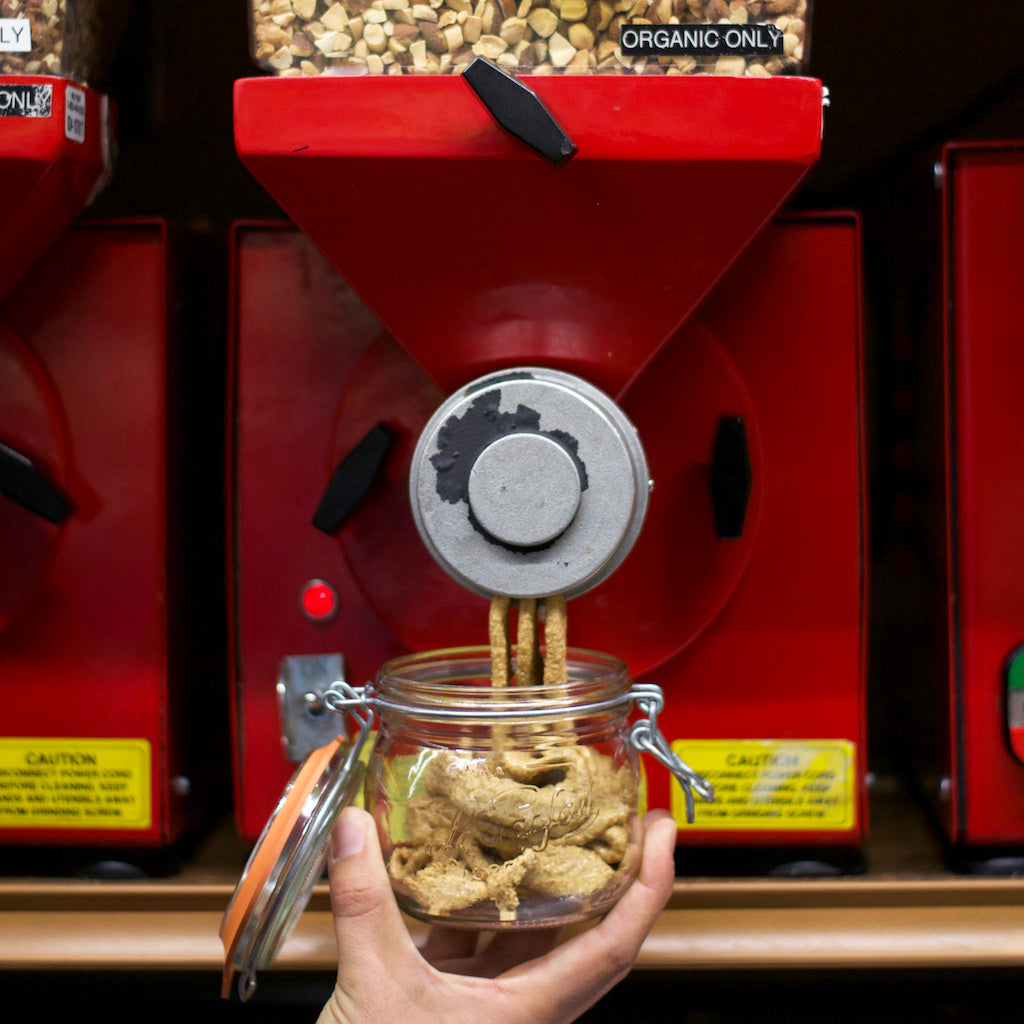
3. Olive Bar: Bon Appetite recently rounded up the 8 best things at the Whole Foods olive bar. The castelvetrano olives are my personal favorite—they’re buttery, tender and perfect for snacking. The olive bar also has marinated gigante beans and mushrooms, grilled artichoke and cornichon. Shopping plastic-free at the olive bar is easy—you just tare your unfilled jar and fill it up. No need to write down a PLU (price look up) like you do in the bulk aisle. Whole Foods has one set price for the olive bar.
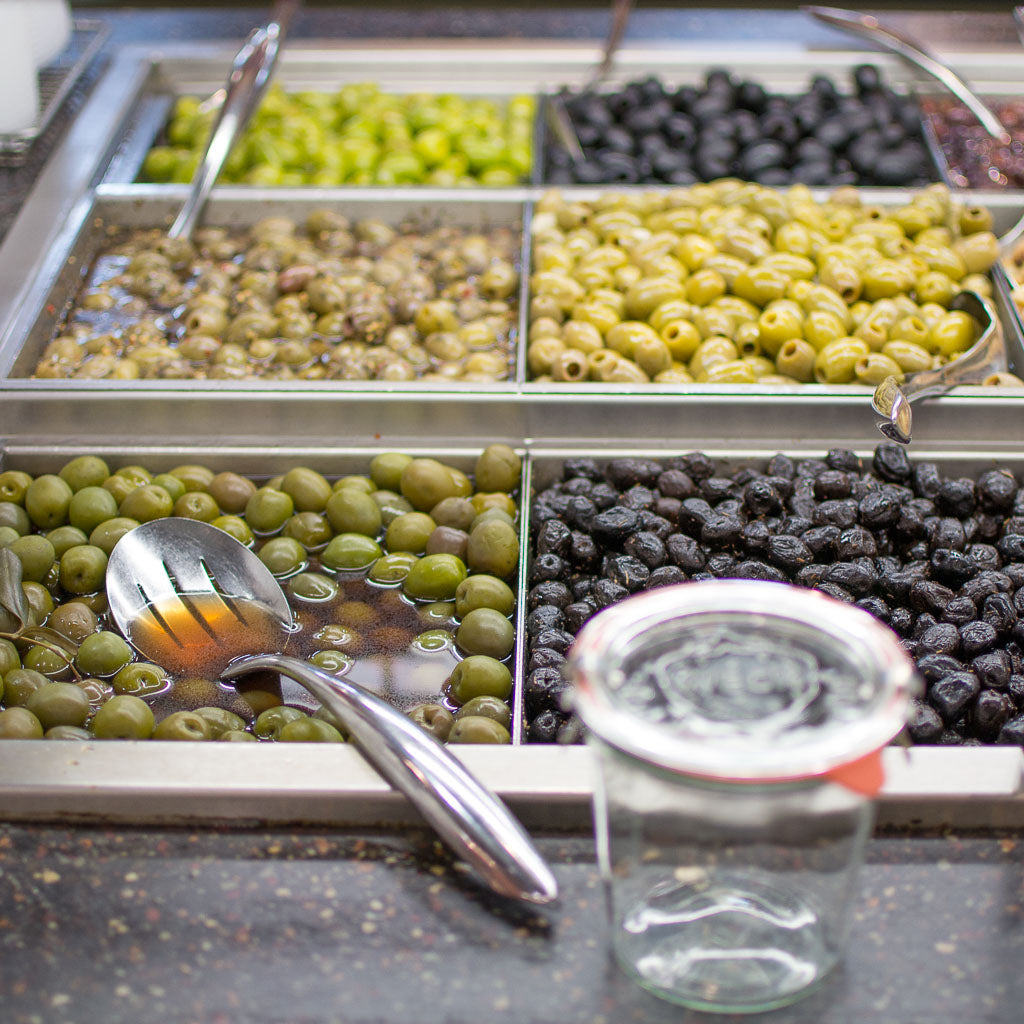
4. Cheese Counter: Have you ever noticed that cheesemongers are ridiculously nice...no, just me? While most cheese is pre-wrapped in cellophane for convenience, the nice people at the cheese counter will happily cut a fresh wedge off a cheese wheel and put it in your jar sans wrap. You also don’t have to tare your jar—the cheese counter has a scale and will weigh the cheese separately to get a price before they place it your container.

5. Meat Counter: Same goes for the meat counter. While I’m a vegetarian, my husband eats meat and takes a large glass storage container to the meat counter at Whole Foods weekly. The butcher will weigh the meat separately and place it in the glass container with a price sticker placed on the lid for the cashier to scan.

6. Salad Bar: I’ve used my own stainless steel lunchbox at the salad bar and it’s great for taking food home without using a paper to-go box. Make sure you tare your container before you fill it with food. I’ve also noticed that a lot of the Whole Foods Market locations in Northern California offer reusable plates and bowls for dining in the store. Such an awesome idea. Be sure to bring your own cutlery since I’ve only seen plastic and sometimes compostable cutlery provided.
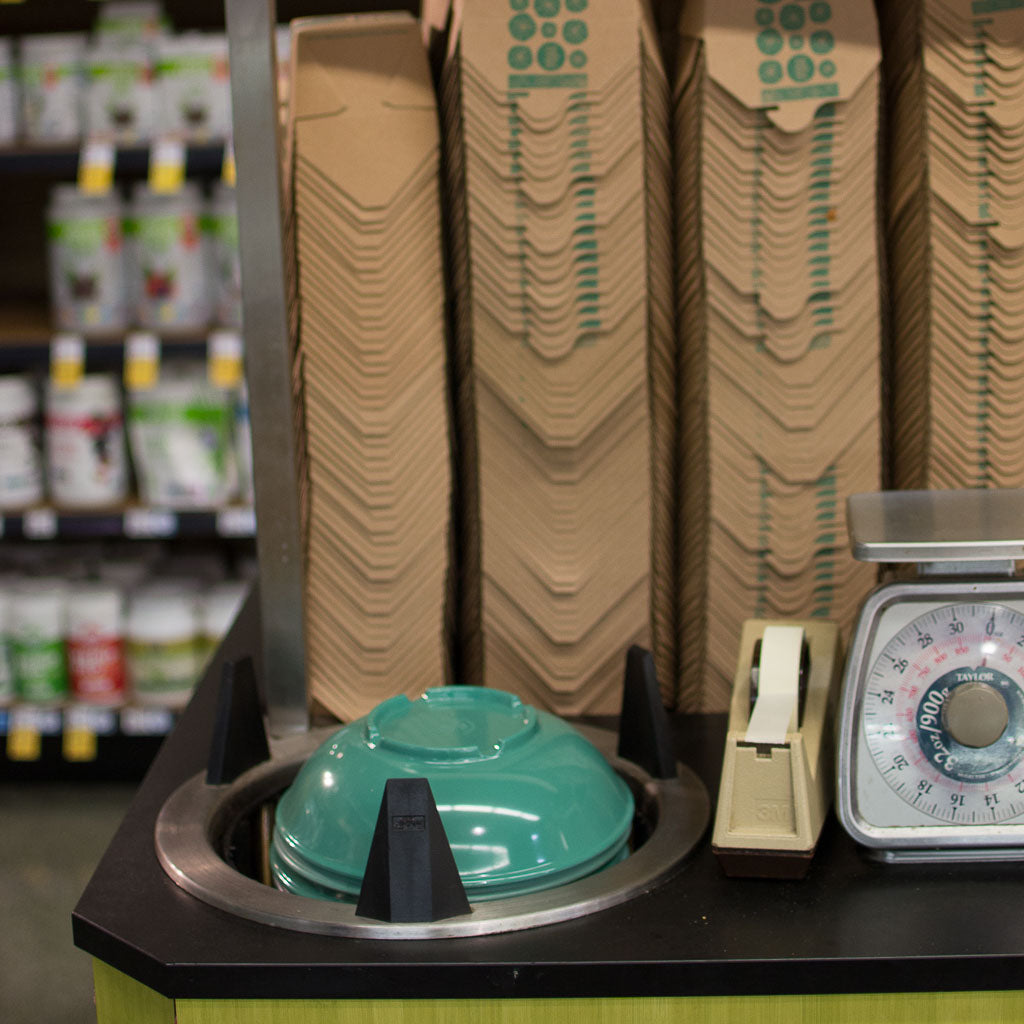
7. Bulk Aisle: The bulk aisle is my absolute favorite place for plastic-free shopping. At Whole Foods, I stock up on everything from flour and sugar to nuts and grains to dried fruit and trail mix. I’ve also found bulk tea, spices and some locations have bulk olive oil, honey and vinegar. For most items, I use a muslin produce bags and write the PLU on my phone. For fine items like spice and flour, I often bring a tared jar and write the PLU on the jar. For liquid items like olive oil and honey, I bring a tared latch-top bottle or jar and write the PLU on the jar with a piece of paper tape. Not only is the bulk aisle great for shopping plastic-free, many of these items are much less expensive than the packaged versions—especially spices!

8. Smoothie/Coffee Bar: I often like to treat myself to a smoothie or latte after a big grocery shop. It’s nice that many of the Whole Foods locations have a juice bar or Allegro coffee bar on-site. I just ask the barista to fill my own stainless steel tumbler or glass coffee cup and they are happy to oblige. It’s good to know the capacity of your cup beforehand so you know what size to order.

9. Baked Goods. Instead of using the paper sleeves provided, bring your own cloth bread bag to buy pastries and bread package free. I’ve read that Bea Johnson brings a large bread bag made from an old sheet to buy 15 baguettes biweekly for her family! For more delicate items like cakes and cupcakes, you’ll want to bring a sturdier container like a stainless steel lunchbox or glass jar. I also read that Kathryn Kellogg brought her own container to pick up a cake for her zero waste wedding.

10. Mochi: Have you seen the self-serve mochi bars popping up at Whole Foods?! Mochi, bite-sized ice cream treat enveloped in sweet rice dough, is a lovely dessert with built in portion control (unless of course you eat multiple in one sitting, no judgements). Bring your own jar to fill with a variety of mochi flavors—strawberry, double chocolate, matcha, coffee, mango and some seasonal varieties. Whole Foods charges $2 per mochi, so no need to tare your jar.
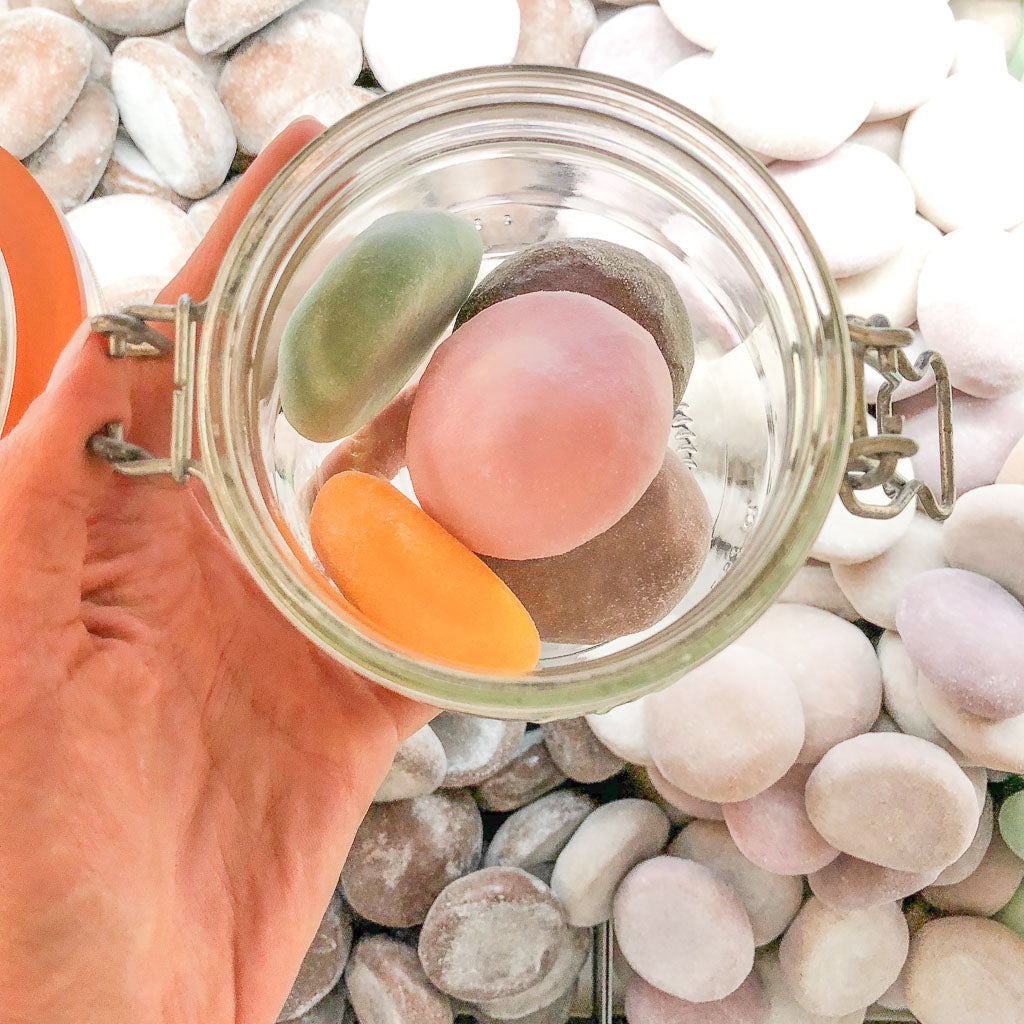
11. Soaps: There’s a nice selection of bulk soaps at Whole Foods. You can find liquid bath wash, shampoos and conditioners and I’ve also seen bulk bath salts and bar soap. Bring your own tared glass jar for the liquid items or use a muslin cloth bag for bar soaps and salts. Be sure to note the PLU as well.

With a little bit of planning and practice, you too can purchase the majority of your groceries plastic-free. My experience with zero waste shopping at Whole Foods only accounts for the Northern California locations. If you’re outside the area, I’d recommend calling the store or checking in with the information desk to make sure they accept shopping with your own jars.
I hope my list of ways to shop plastic-free at Whole Foods helps and would love to hear what additional methods and tips you recommend for zero waste grocery shopping.

